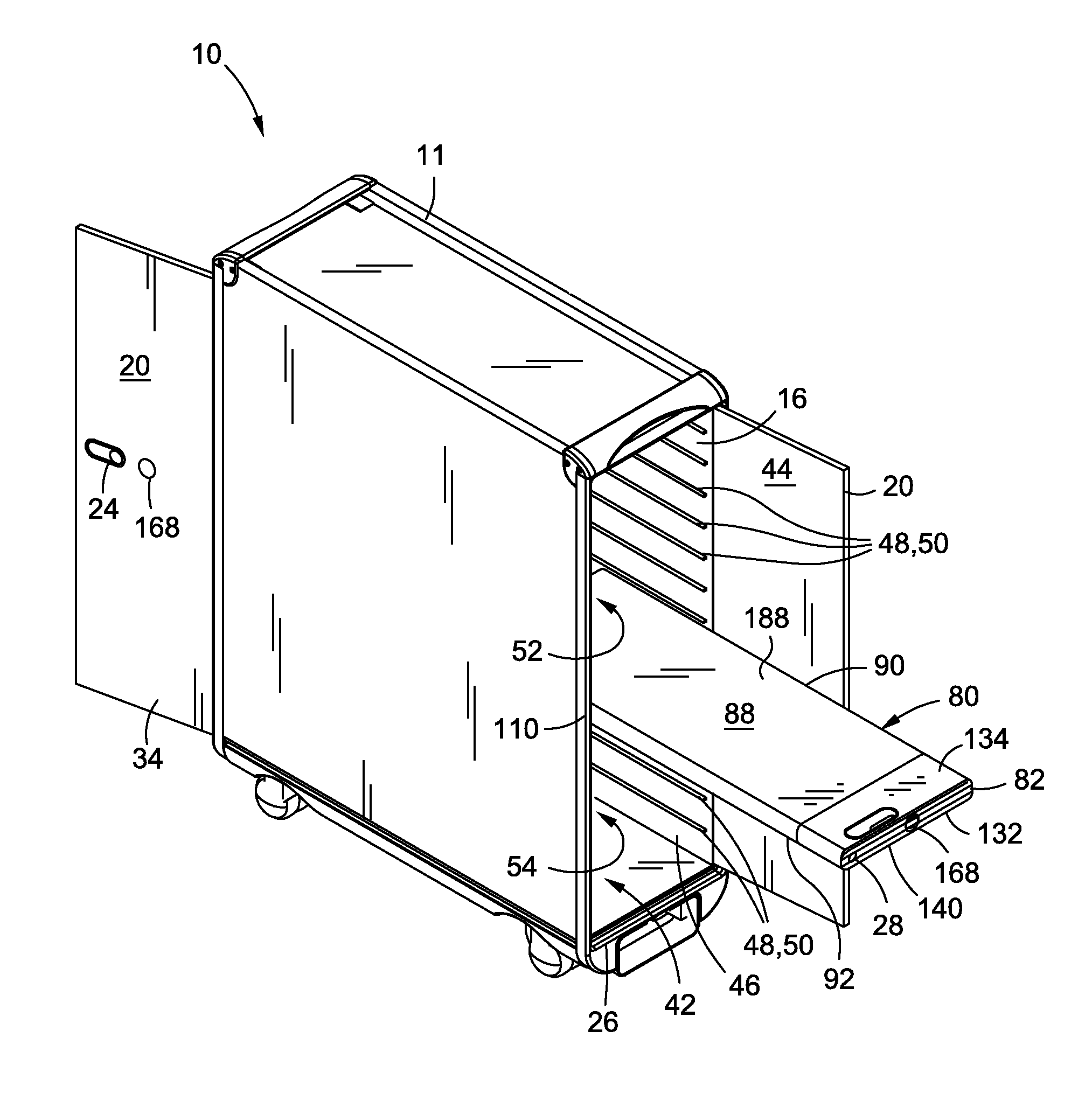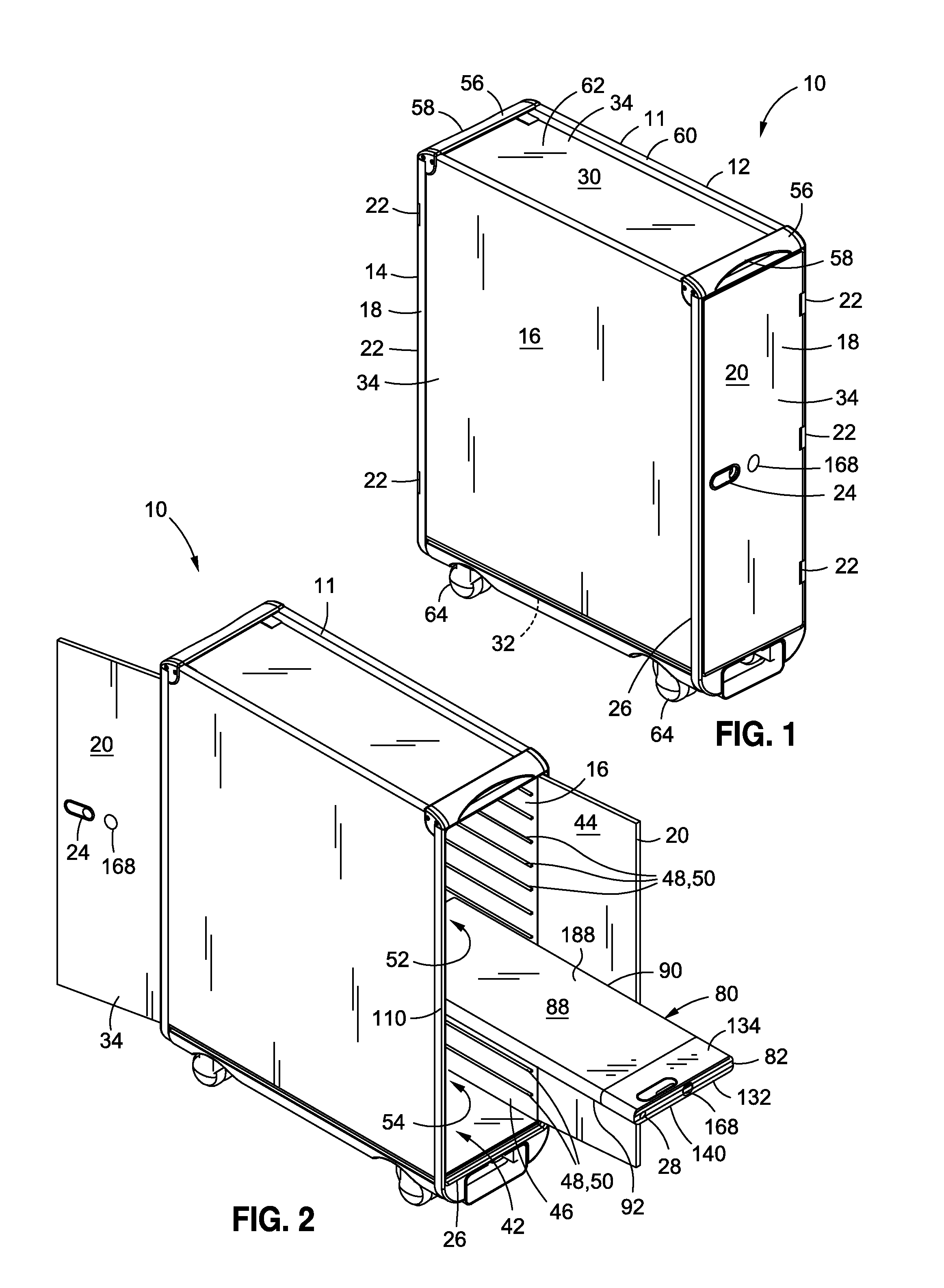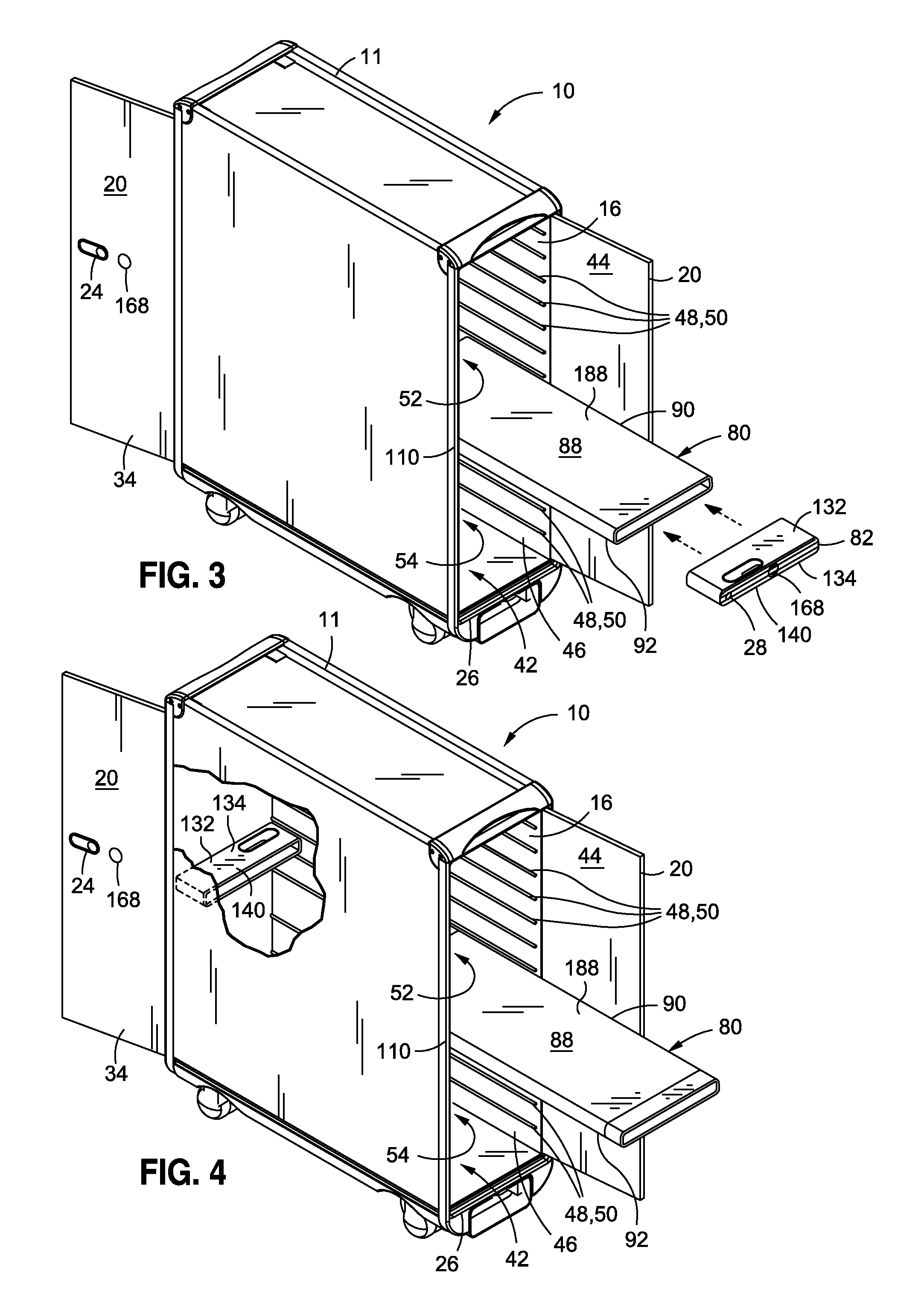Refrigerated container
a technology for refrigerating containers and containers, applied in the field of refrigeration containers, can solve the problems of reducing the payload capacity, reducing the overall utility of the aircraft, and adding the weight of mechanical refrigeration units to the overall weight of the aircra
- Summary
- Abstract
- Description
- Claims
- Application Information
AI Technical Summary
Benefits of technology
Problems solved by technology
Method used
Image
Examples
Embodiment Construction
[0055]Referring now to the drawings wherein the showings are for purposes of illustrating preferred and various embodiments of the disclosure, shown in FIGS. 1-8 is a container system 10 as may be used in an aircraft cabin. The container system 10 may comprise an insulated galley cart 12 housing a cold tray 80 (FIG. 2) containing refrigerant (FIG. 2). The cold tray 80 is insertable within a container interior 42 of the galley cart 12 for maintaining food or other items stored within the galley cart 12 at a safe temperature. The cold tray 80 comprises a self-contained cooling unit that, when installed within the galley cart 12, may maintain the air temperature of the container interior 42 below a desired temperature. For example the cold tray 80 may maintain the container interior 42 at between approximately 0° C. and approximately 7° C. for extended durations of up to 15 hours or longer. However, the galley cart 12 and the cold tray 80 may be configured to maintain the air temperatu...
PUM
 Login to View More
Login to View More Abstract
Description
Claims
Application Information
 Login to View More
Login to View More - R&D
- Intellectual Property
- Life Sciences
- Materials
- Tech Scout
- Unparalleled Data Quality
- Higher Quality Content
- 60% Fewer Hallucinations
Browse by: Latest US Patents, China's latest patents, Technical Efficacy Thesaurus, Application Domain, Technology Topic, Popular Technical Reports.
© 2025 PatSnap. All rights reserved.Legal|Privacy policy|Modern Slavery Act Transparency Statement|Sitemap|About US| Contact US: help@patsnap.com



